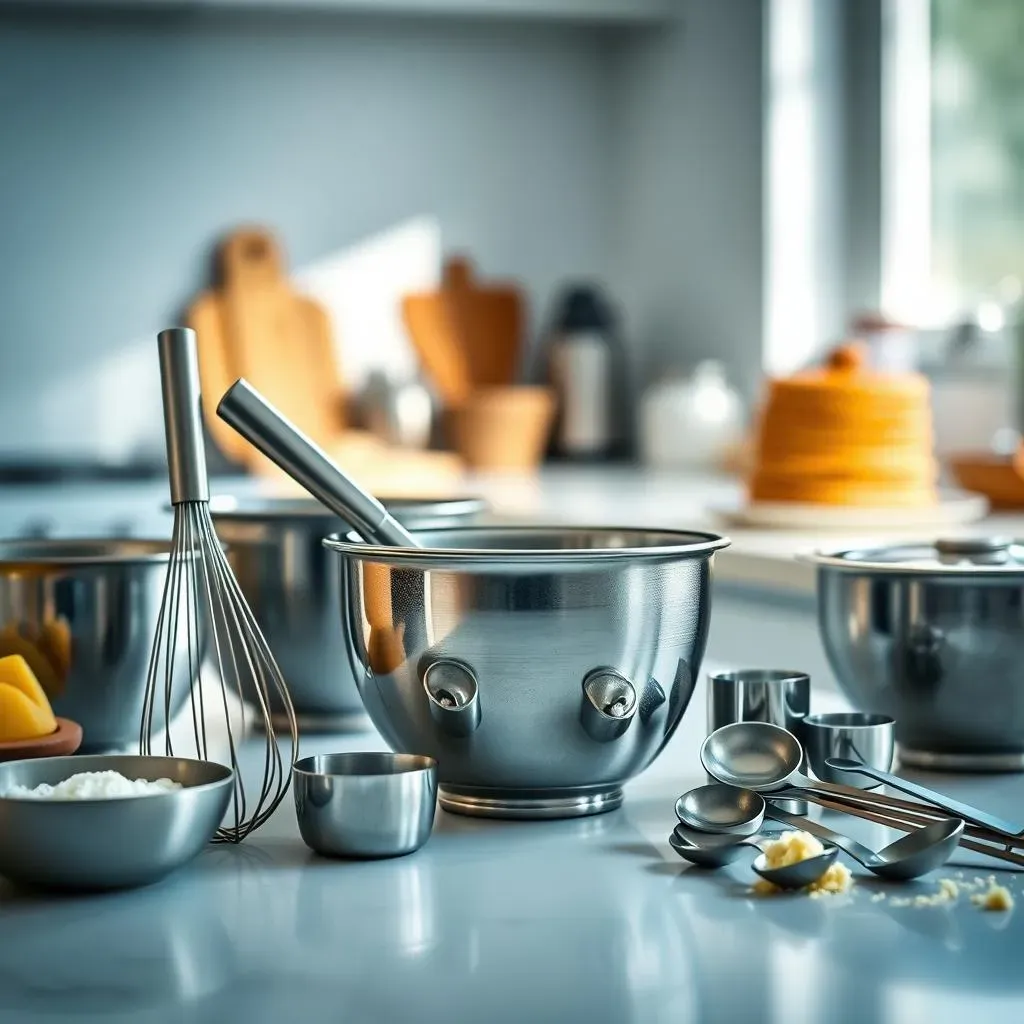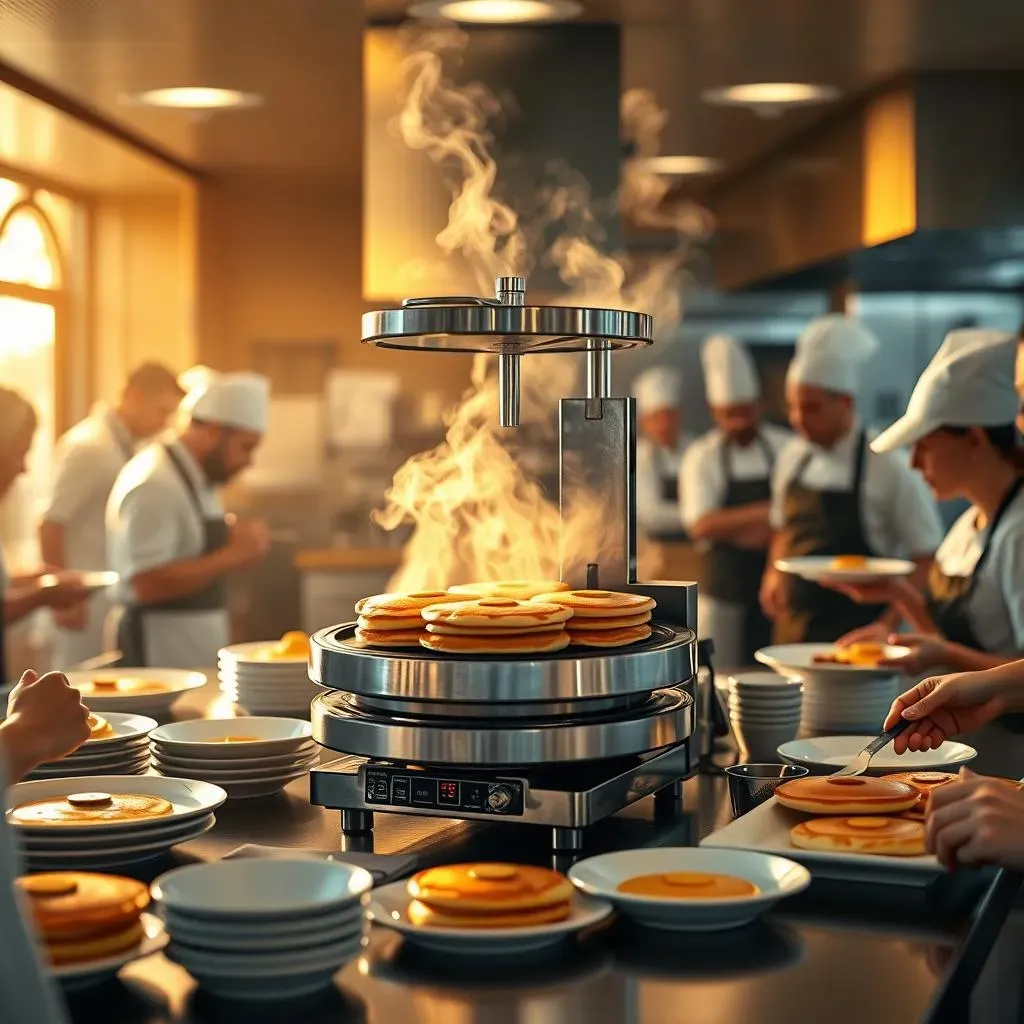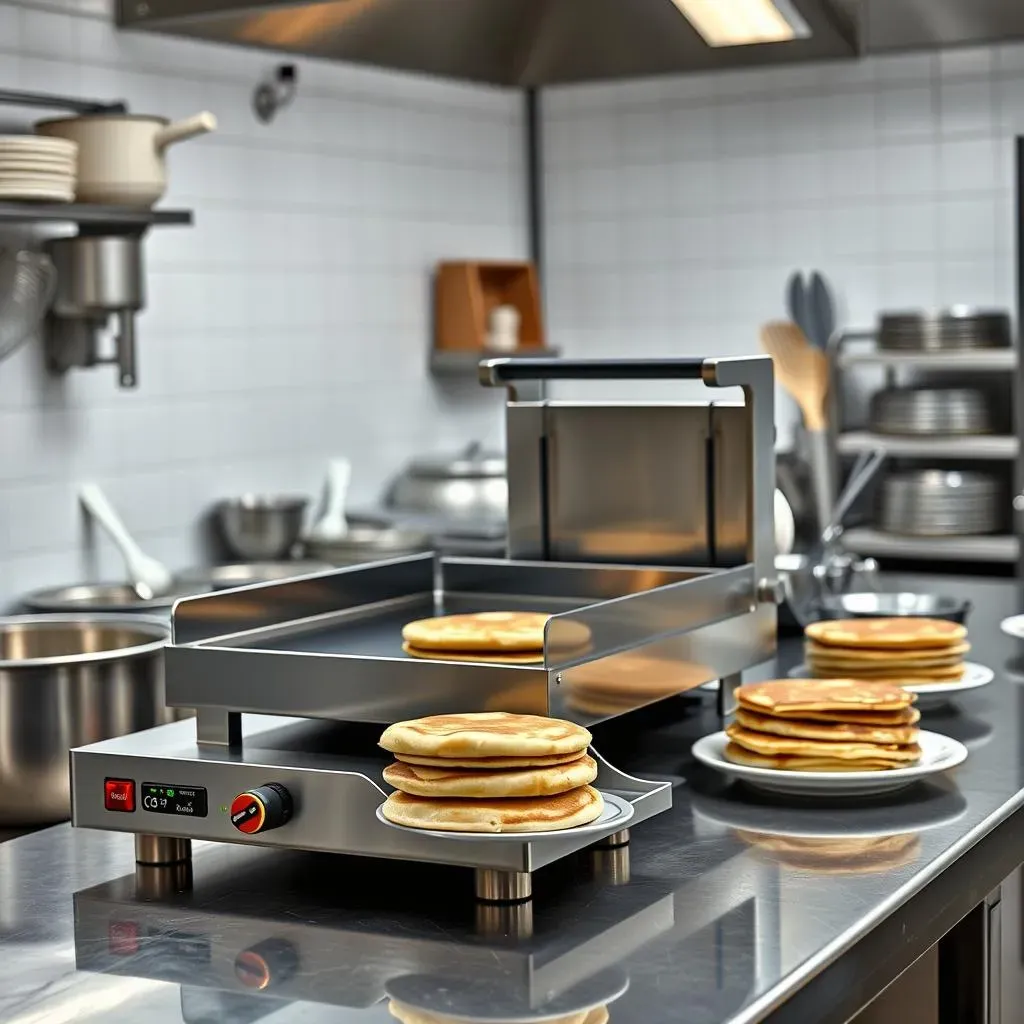Table of Contents
Ever wonder how some restaurants whip up those perfectly golden, fluffy pancakes every single time? It's not just magic; it's the right equipment! In the competitive world of breakfast service, having the best pancake making equipment for restaurants can make all the difference. This isn't just about slapping batter on a hot surface. We're talking about consistent quality, speed, and efficiency that can keep your customers happy and your kitchen running smoothly. This article is your guide to navigating the often confusing world of commercial pancake equipment. We will look at why using proper tools matters, and what those tools actually are, we'll explore the benefits of automatic pancake makers, and even give you some tips on keeping your gear in top shape. So, whether you're a seasoned chef or just starting out, get ready to discover how to make your restaurant's pancakes the talk of the town.
Why RestaurantGrade Pancake Equipment Matters

Why RestaurantGrade Pancake Equipment Matters
Okay, so you might be thinking, "Pancakes are pancakes, right? Why do I need fancy restaurant gear?" Well, let me tell you, it's like comparing a kid's drawing to a masterpiece. Sure, both are images, but one is going to impress. Using home equipment in a restaurant is like trying to build a skyscraper with Lego blocks – it just won't cut it. Restaurant-grade equipment is built to handle the heat, literally. It’s designed for constant use, day in and day out, without breaking a sweat. Think about it, if your griddle can't maintain an even temperature, you'll end up with some pancakes that are burnt, some that are raw, and a whole lot of unhappy customers. Consistency is king, especially when you're dealing with hungry crowds.
Essential Tools for Making Pancakes: Beyond the Griddle

Essential Tools for Making Pancakes: Beyond the Griddle
Alright, so you've got the griddle covered, but that's just the beginning. Think of it like building a car; you wouldn't just have the engine, would you? You need all the other bits to make it go. For pancakes, the same is true. It's about more than just a hot surface. First off, you absolutely need good mixing bowls. I'm not talking about your grandma's chipped ceramic bowl here. You need sturdy, stainless steel bowls that can handle a lot of mixing without bending or breaking. You also need a whisk that's up to the task. A flimsy whisk will leave you with lumps of flour that no one wants in their pancake. Then, there's the spatula – your pancake flipping friend. A thin, flexible spatula is key for getting under those delicate pancakes without tearing them to shreds. And let’s not forget about a good measuring set, both for liquid and dry ingredients, because eyeballing it is a recipe for disaster.
Tool | Why You Need It |
|---|---|
Stainless Steel Mixing Bowls | Durable, easy to clean, and won't react with ingredients. |
Sturdy Whisk | Ensures a smooth batter without lumps. |
Thin, Flexible Spatula | For easy and gentle pancake flipping. |
Measuring Cups and Spoons | Accurate measurements for consistent results. |
Automatic Pancake Makers: Boosting Efficiency

Automatic Pancake Makers: Boosting Efficiency
Alright, let's talk about the real game-changer: automatic pancake makers. I know what you're thinking, "Is that really necessary?" And my answer is a resounding YES, especially if you're running a busy restaurant. Picture this: a Saturday morning rush, a line out the door, and everyone wants pancakes. You’ve got two choices: either you’re stuck there flipping away, or you've got a machine that can pump out perfect pancakes like clockwork. Automatic pancake makers aren't just for lazy chefs; they're for smart ones. They can save you a ton of time and labor, ensuring that each pancake is cooked to the same golden perfection. Think of it as having a pancake-making robot, but way less scary.
Maintaining Your Restaurant's Pancake Making Equipment

Maintaining Your Restaurant's Pancake Making Equipment
Keeping it Clean
Okay, so you've invested in the best pancake making equipment for your restaurant, that's great! But it's not a "set it and forget it" situation. Just like a car needs regular maintenance, your pancake gear does too. First and foremost, cleanliness is crucial. I cannot stress this enough. After each use, you need to clean your griddle thoroughly. Don't let batter build up because it will turn into a sticky mess that’s difficult to remove. Invest in a good scraper and some food-safe degreaser. For bowls and whisks, hot soapy water works wonders, but make sure you dry them completely to prevent rust. And those automatic pancake makers? They usually come with specific cleaning instructions, so follow those to the letter. Ignoring this step is like inviting a whole host of problems down the line.
It's not just about making sure things look clean, though. It's about food safety, too. If you let batter and grease build up, it can become a breeding ground for bacteria, which is definitely not something you want in your kitchen. And remember, a clean machine runs more efficiently, so you're actually saving yourself time and money by keeping things tidy. Plus, nobody wants to eat a pancake that's been cooked on a dirty griddle. It's just gross.
Regular Checks and Maintenance
Beyond the daily cleaning, you also need to do regular checks of your equipment. Check your griddle for any signs of damage. Any dents or uneven surfaces can affect the way your pancakes cook. For automatic pancake makers, make sure all the moving parts are working smoothly. Are there any strange noises? Are all the temperature settings working correctly? If something seems off, don’t wait until it breaks down completely. Address it right away. It’s like catching a small leak before it turns into a flood.
Also, remember to replace any worn-out parts. That flimsy spatula that you've been using for ages? Toss it and get a new one. Those worn-out mixing bowls with scratches on the bottom? Replace them. These small investments can make a huge difference in the long run. A little bit of maintenance goes a long way in ensuring your equipment lasts longer and performs at its best. It’s all about being proactive, not reactive. And it shows that you care about the quality of the food you’re serving.
Maintenance Task | Frequency | Why It Matters |
|---|---|---|
Griddle Cleaning | After Each Use | Prevents batter buildup and ensures even cooking. |
Bowl and Whisk Cleaning | After Each Use | Maintains hygiene and prevents rust. |
Automatic Maker Cleaning | As per manufacturer's instructions | Ensures optimal performance and longevity. |
Equipment Checks | Weekly | Identifies and addresses potential issues early. |
Part Replacement | As Needed | Maintains equipment efficiency and safety. |